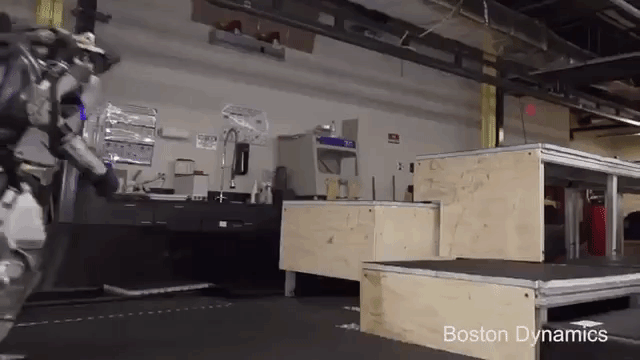[originally posted at infinite imaginations]
Another year has passed by quickly — this year however, has been consistent. Artificial intelligence (AI) has been constantly making tech headlines and I have been fortunate enough to be able to play around with some of it. As technology grows and evolves at an exponential rate, what does AI have to offer for us in the future?
Artificial Intelligence - AI will continue to improve, for better or worst
JARVIS, Skynet and Hal are a few of the well-known self-aware and sentient computer programs in science fiction. While these characters may not be far away from the distant future, companies like Google and IBM are continuously developing systems to either help us to do a particular task faster or just be better than us humans, hoping that one day robots or androids will be there for us to do the dirty work. AI has at one point has alarmed people of losing their jobs. Just relax because at this point in time, AI is only capable in excelling at very specific areas.
With the aid machine learning, we will see companies utilise AI to automate tasks such as fast and accurate data learning, autonomous mobile robots, digital assistants and conversational platforms to name just a few. We first saw AI been implemented in smartphones such as Apple’s Siri and Google’s Assistant and in the recent months, we have seen a sudden surge of smart speakers being released to the consumers. AI will continue to spread like wildfire across the industry in the years to come. In 2019, we will definitely see more of AI being integrated into other devices, helping us accomplish more tasks quickly without us humans getting our hands dirty.
Conversational Platforms - “Hello, how can I help you today?”
“Ok Google, Hey Siri, Alexa,” the initialising commands of Google’s, Apple’s and Amazon’s personal assistants. The platforms developed by their respective tech companies have paved way and developed speech recognition algorithms with the use of artificial intelligence and machine learning. Chatbots hit the industry and initially posed as a threat for call centres helping to take the load off the people by answering most frequently asked questions or help consumers purchase items through a conversation without the need of a human behind the wheel.
During the peak of its hype cycle, I have experimented with the technology and learned a few things about building a chatbot. One of the most important lessons that I have learned is that “one should never build a chatbot just because of the hype” because this will be the failure of the project. In 2019, consumers are more likely accept these conversational platforms as tech companies continue to develop and improve these platforms. Because it is really easy to create a chatbot, we will see more of these chatbots popping out everywhere We might even be conversing with one without knowing it.
Being online, all the time - Smartphones usage will steadily increase
We all know that our smartphone is our “digital Swiss army knife” and we could not leave home without it. Browsers has been the platform to get users to the internet and tech companies are continuously improving their products to meet the demands of their loyal consumers. Besides improving the battery life, screen size, and camera quality, Google and Apple have integrated AI into their software providing an improved and smoother user experience. Not only that you have a virtual assistant with you in your phone all the time, it also learns and “predicts” the apps that you might be mostly using next at that specific time of the day.
There is no stopping of browsers to improve in 2019 and the years to come. Browsers are gaining features and capabilities that are becoming more “native” and “app-like.” Machine learning has even landed on browsers and I have managed to play around with such technologies that enabled me to detect objects using a camera and a web browser. Developers are even planning to get virtual and augmented reality as a standard to web browsers in able to get more users to have an immersive experience without the need to download an app.
Super Duper Hyper-personalisation - Better customer experience means more loyal customers
I open up my browser and start browsing at Facebook or Amazon and at first I didn’t notice it, but I saw a familiar pattern: I see ads or posts that were related to my past searches. I listen to Spotify, watch videos on YouTube or movies on Netflix and I noticed the music or movies being presented were of my interest. I didn’t tell anyone nor did save any preferences. It just happened. What is this sorcery?
With the advent of personalisation, it wasn’t enough for people to just read their names in emails from sites and services that they have subscribed to. That was already standard in digital marketing. Hyper-personalisation took it a step further by customising the person’s customer experience or journey by providing the things that they want or more interested in. In the years to come, hyper-personalisation with the help of AI will enable companies to provide the things their consumers want or interested at as quick as possible, providing better customer experience and making them loyal to the brand. Better customer experience means more loyal customers. More loyal customers means more money to the company. And I’m a sucker at that.
Autonomous Mobile Robots - Robots running and opening doors, sh*t is getting real
I always thought that drones would only be a rich-man’s toy, flying around in open spaces and take photos or videos that were impossible to be taken by anyone. With drones becoming more cheaper, they are now being utilised to transport packages, food or other goods to places. These unmanned aerial vehicles (UAV) can help deliver medical supplies to inaccessible places. Backed up with AI, these UAVs are not aided anymore by humans. They are programmed in such a way that they know what to do in case something goes wrong. They know where to go and how to come back to headquarters without human intervention.
After watching Black Mirror’s episode titled Metalhead and a short video of Boston Dynamics’ robots, the future got a little bit exciting (or scarier depending on how you look at it). With drones now capable to deliver goods, a robot that can do parkour, and a dog that can open doors, it is certainly clear that the dream of having a robot or android as a helper will be coming to help us in the near future. Maybe one day, we might just have our own Threepio helping us.
Bonus Round: Immersive Experience (AR, & VR) - Merging digital world with physical world
Augmented reality and virtual reality has been going on for some time now. However it only has gain most of its traction in the gaming sector. The most notable AR game is Pokemon Go, where players get to “exercise” by walking around the physical world in search for Pokemons in the digital world. VR games too are attracting popularity by immersing players into another world. They can see, hear and interact in the virtual world that they are thrown into. Tech companies such as Zero Latency and VR Zone Shinjuku offer VR experiences to the public. I was lucky enough to have enjoyed and experienced VR games in Japan and I would say that it is not only fun, but a memorable experience for any gamers.
AR and VR has now expanded their reach beyond the world of gaming. In the next few years, it would reach training, education and tourism sectors just to name a few. Some already has embraced the technology and provided immersive experiences to their customers. Retail companies have invested in AR booths, where their customers can try on clothes without even removing their own in a virtual world. As tech companies like Google and Mozilla developing to make AR and VR to be a standard in browsers, I believe that one day, we will one day see more [immersive experiences in the mobile web](/#/article/vr-and-ar-in-the-mobile-web).
Wrapping it up: The future is bright
It will be an exciting year for 2019 as AI, AR and VR continue to gain traction and technology gets better and cheaper. I see the next year will be the integration of these technological trends into more smart devices and wearables. We could potentially see the rise (or the comeback) of smart glasses. Google Glass wasn’t ready for the consumer market years ago probably because of the price tag, battery life or privacy concerns, but changing the approach and purpose of the smart glass might change the perception of the device.









Top comments (0)